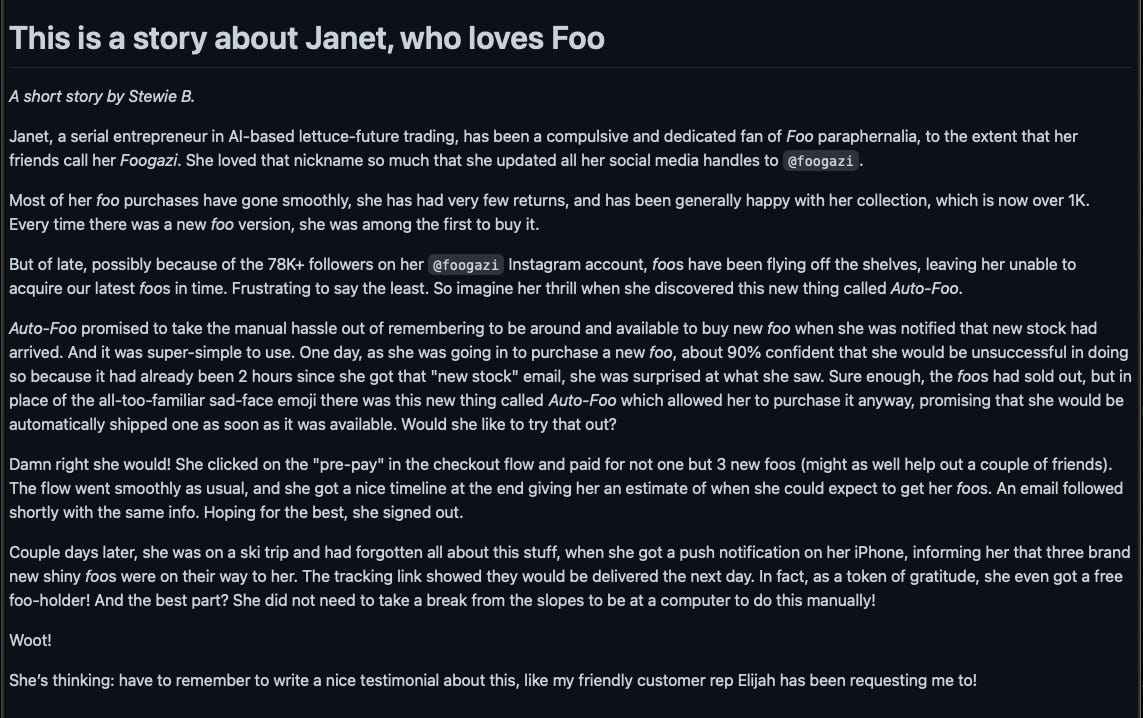Tell me a story
Putting the "story" in user story
This is a bit of a continuation of an earlier post of mine which, in some sections, morphed into a sob-story about the marginalization of end users. I’ve been nursing those wounds for some time. So, I did a thought exercise a little while ago in an effort to come up some therapeutics for them: putting the story in a user story.
It was fun to write. I am not sure what impact it had on my intended audience back then, but I’ll try my luck again with this audience, with some mods on specifics without losing intent.
I’ll go back to the same FooStore from that earlier post (and yes, I really wish I had come up with something more creative than foo), and the same Janet who loves to buy foo.
Here’s the twist: foos are getting popular, and the store keeps running out of them. No amount of eventual consistency is going to help with foo inventories. Sure, a notification to users when new foo stock arrives is nice, but that ain’t cutting it.
So, Butterfield and others from foo.ai plan a new feature: Autofoo. A pre-order that’s paid for, and automatically fulfilled, on FIFO basis, as new stock comes in.
Here’s a standard-issue user story / epic for Autofoo:
This is all useful and necessary to be sure. But I want my team to care, deeply, about Janet’s emotions. Here’s how I would prefer to tell the user story:
To wit: Start with the user.
This is inordinately ornate to be sure, but the point was to make a point. It is also a trivial use case - the original one I wrote it for was significantly more complex. Furthermore, this is not intended to replace traditional epics and other artifacts. Rather, the hope is that every new feature or product begins life like this: with the user at the center of things.
As a perk: it’s a blast to write stuff like this (even if not as over-dramatized as this one), plus it gets the builders excited to build it.
I really do think screenwriters would make great product people!





